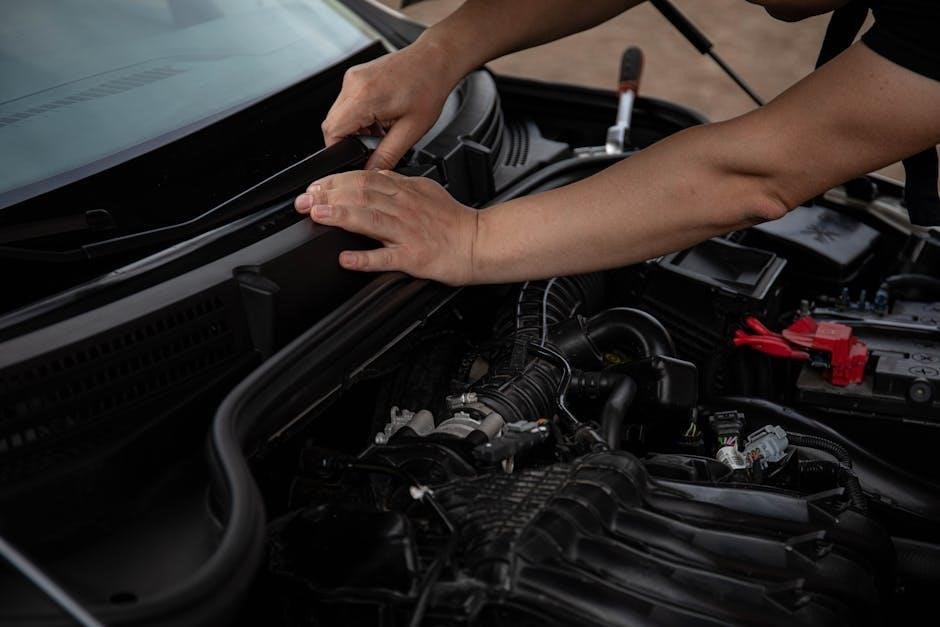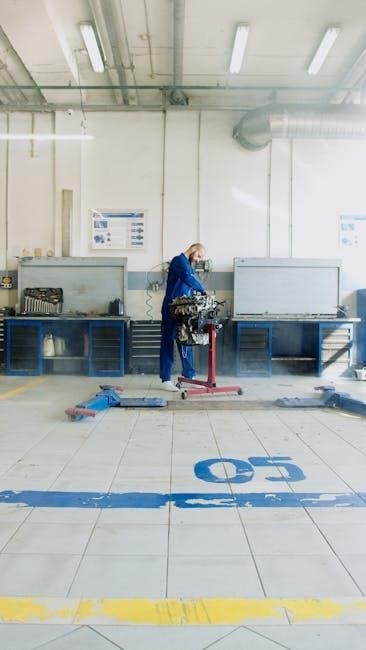Manual transmission conversion is possible for 6.7 Powerstroke engines, however, it requires extensive modifications and computer tuning, according to online forums and enthusiast communities discussing the topic.
Overview of the 6.7 Powerstroke Engine
The 6.7 Powerstroke engine is a turbo diesel engine used in Ford trucks, known for its power and torque output.
The engine has a peak torque of 925 ft-lbs, making it a popular choice for heavy-duty applications.
According to online forums, the 6.7 Powerstroke engine is a complex piece of machinery, with sophisticated electronic controls.
The engine’s computer system plays a crucial role in its operation, and any modifications, such as a manual transmission conversion, would require careful consideration of these controls.
The 6.7 Powerstroke engine is used in a variety of applications, including hauling and towing, and its reliability and performance have made it a popular choice among truck enthusiasts.
The engine’s design and functionality have been discussed extensively in online communities, with many owners and enthusiasts sharing their experiences and knowledge.
Overall, the 6.7 Powerstroke engine is a powerful and complex engine, requiring careful consideration and expertise when it comes to modifications or repairs.
Its power and torque output make it a popular choice for heavy-duty applications, and its reliability and performance have made it a staple in the trucking industry.
The engine’s electronic controls and computer system are critical components, and any modifications or repairs must be done with caution and expertise.
The 6.7 Powerstroke engine is a remarkable piece of machinery, and its capabilities and limitations are well-documented in online forums and enthusiast communities.

Manual Transmission Conversion for 6.7 Powerstroke
Conversion requires extensive modifications and expertise, including transmission and computer system upgrades, for a successful manual transmission conversion installation process always.
Challenges of Swapping a Manual Transmission
Swapping a manual transmission into a 6.7 Powerstroke-equipped vehicle poses significant challenges, primarily due to the complex electronic controls and automatic transmission systems. The engine’s computer system must be reprogrammed to accommodate the manual transmission, which can be a difficult and time-consuming process. Additionally, the transmission itself must be carefully selected and installed to ensure compatibility and reliability. The 6.7 Powerstroke engine produces a significant amount of power and torque, which can put a strain on the manual transmission, requiring specialized components and expertise to handle the stress. Overall, swapping a manual transmission into a 6.7 Powerstroke-equipped vehicle requires careful planning, specialized knowledge, and significant technical expertise to overcome the numerous challenges involved. The process is not for the faint of heart and should only be attempted by experienced enthusiasts or professionals.
History of Manual Transmissions in Ford Diesel Engines
Ford offered manual transmissions in older diesel models, such as the 6.0 and 6.4, with various transmission options available, including the BorgWarner T-19 and ZF S5-42 models always.
Transmission Options for Older Ford Diesel Models
For older Ford diesel models, various transmission options were available, including the BorgWarner T-19 and ZF S5-42 models, which were used in the 6.9L and 7.3L IDI engines. The BorgWarner T-19 was a 4-speed manual transmission, while the ZF S5-42 was a 5-speed manual transmission. These transmissions were designed to handle the power and torque output of the older diesel engines, and were popular among enthusiasts who preferred manual transmissions. The transmission options for older Ford diesel models have been well-documented, with many online forums and communities discussing the pros and cons of each transmission type.

Computer Tuning Aspect of Manual Transmission Conversion
Computer tuning is crucial for manual transmission conversion, requiring a deep understanding of engine and transmission interactions and complex software modifications always.
Importance of Electronic Controls in Modern Diesel Engines
Electronic controls play a vital role in modern diesel engines, including the 6.7 Powerstroke, as they enable precise management of fuel injection, combustion, and emissions. The engine’s computer system, also known as the Engine Control Module (ECM), uses sensors and actuators to monitor and control various parameters, such as engine speed, temperature, and pressure. This allows for optimized engine performance, improved fuel efficiency, and reduced emissions. The electronic controls also enable advanced features, such as exhaust gas recirculation and selective catalytic reduction, which are essential for meeting modern emissions standards. Furthermore, the ECM works in conjunction with the transmission control module to ensure seamless communication and coordination between the engine and transmission, making electronic controls a critical component of modern diesel engines. The sophistication of these systems can make manual transmission conversions more complex.
6.7 Bellhousing Pattern and Compatibility
The 6.7 Powerstroke engine has a specific bellhousing pattern that affects manual transmission compatibility and conversion possibilities apparently existing online.
Modular Bellhousing Pattern and its Implications
The modular bellhousing pattern is a crucial aspect of the 6.7 Powerstroke engine, with various online forums discussing its implications for manual transmission conversion.
The pattern used in the 6.0 and 6.4 engines is often referenced, with some enthusiasts claiming it is similar to the 6.7 pattern, while others disagree.
This discrepancy can lead to confusion and misinformation, making it challenging for individuals to determine the correct bellhousing pattern for their specific engine.
As a result, it is essential to consult reputable! sources and experts in the field to ensure accurate information and successful manual transmission conversion.
The modular bellhousing pattern’s implications extend beyond mere compatibility, affecting the overall performance and functionality of the engine.
Proper understanding and application of this pattern are vital for achieving optimal results in manual transmission conversion projects, according to online discussions and enthusiast communities.

Enthusiast Experiences with Manual Transmission Conversion
Enthusiasts share their experiences and opinions on manual transmission conversion for 6.7 Powerstroke engines online with mixed results and varying degrees of success always.
Practical Considerations and Trade-Offs
When considering a manual transmission conversion for a 6.7 Powerstroke engine, several practical considerations and trade-offs must be taken into account, including the potential for increased driver engagement and control.
Additionally, the conversion process can be complex and may require significant modifications to the vehicle’s computer system and transmission components, which can be costly and time-consuming to implement and debug.
Furthermore, the decision to convert to a manual transmission may also impact the vehicle’s overall performance, fuel efficiency, and reliability, particularly if the conversion is not done correctly or with high-quality components, and may void the vehicle’s warranty.
Therefore, it is essential to carefully weigh the potential benefits and drawbacks of a manual transmission conversion before making a decision, and to consider seeking the advice of a qualified mechanic or transmission specialist to ensure a successful outcome.

on Manual Transmission 6.7 Powerstroke
Manual transmission conversion for 6.7 Powerstroke engines is complex and requires careful consideration of various factors and modifications to achieve successful results always online.
Future Prospects and Potential Developments
As the demand for manual transmission conversions continues to grow, manufacturers and enthusiasts may develop new solutions and technologies to make the process easier and more efficient. The use of advanced computer tuning and electronic controls could potentially simplify the conversion process and improve the overall performance of the vehicle. Additionally, the development of new transmission designs and materials could lead to the creation of manual transmissions that are better suited to handle the power and torque output of the 6.7 Powerstroke engine. Online forums and communities will likely play a key role in driving innovation and sharing knowledge and expertise in this area, enabling enthusiasts to push the boundaries of what is possible with manual transmission conversions. This could lead to new and exciting developments in the world of manual transmission 6.7 Powerstroke engines. New technologies are being developed.

Be First to Comment